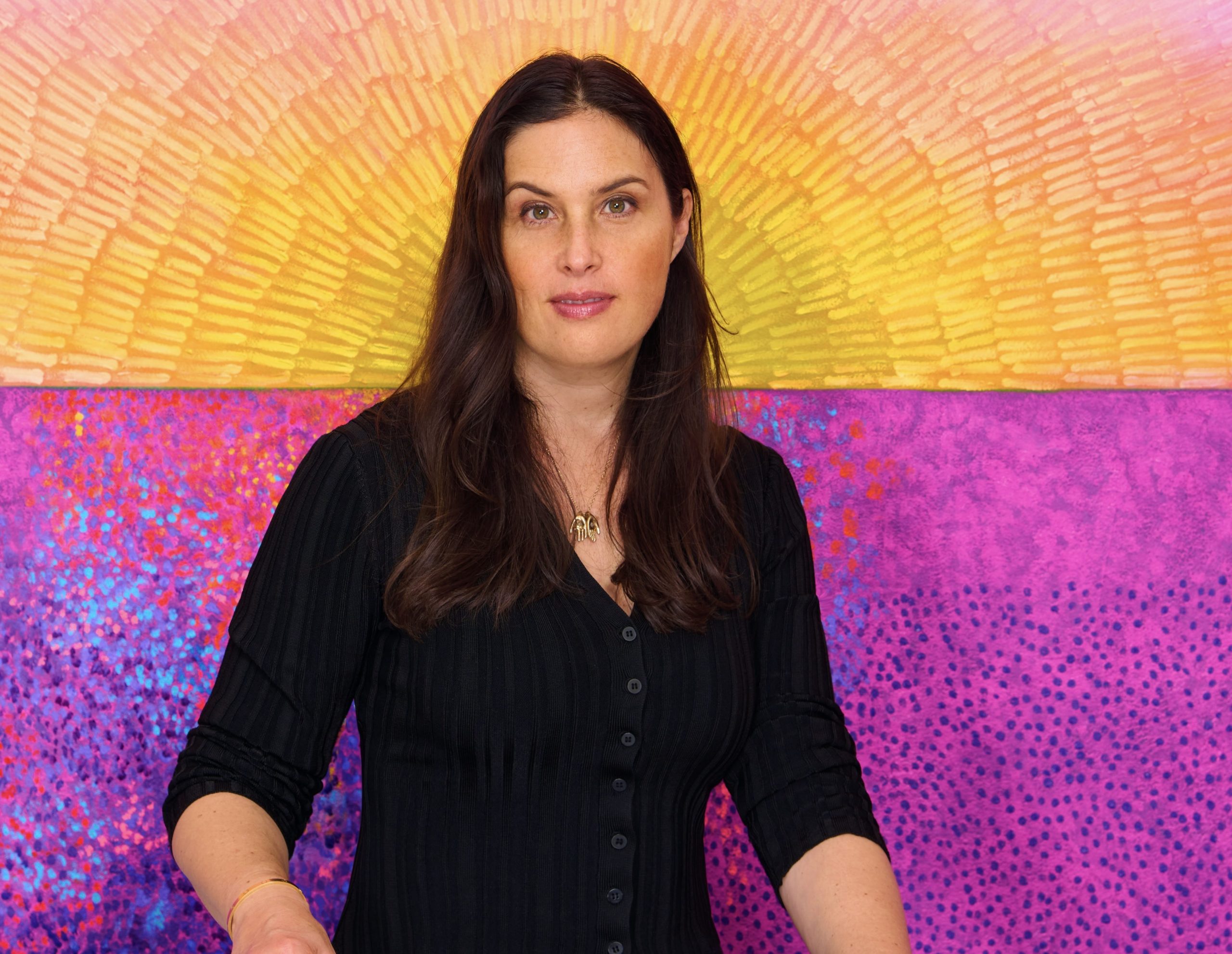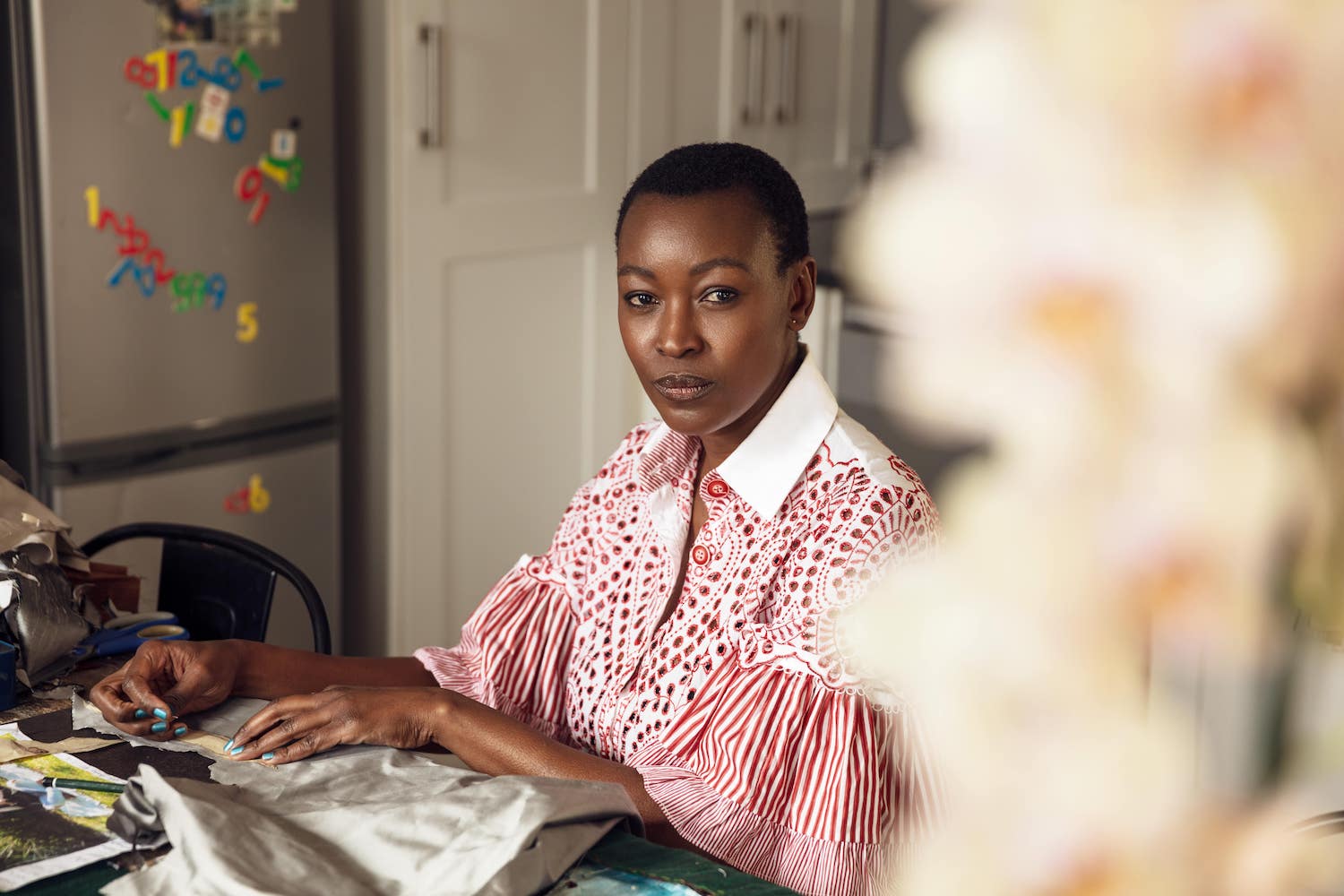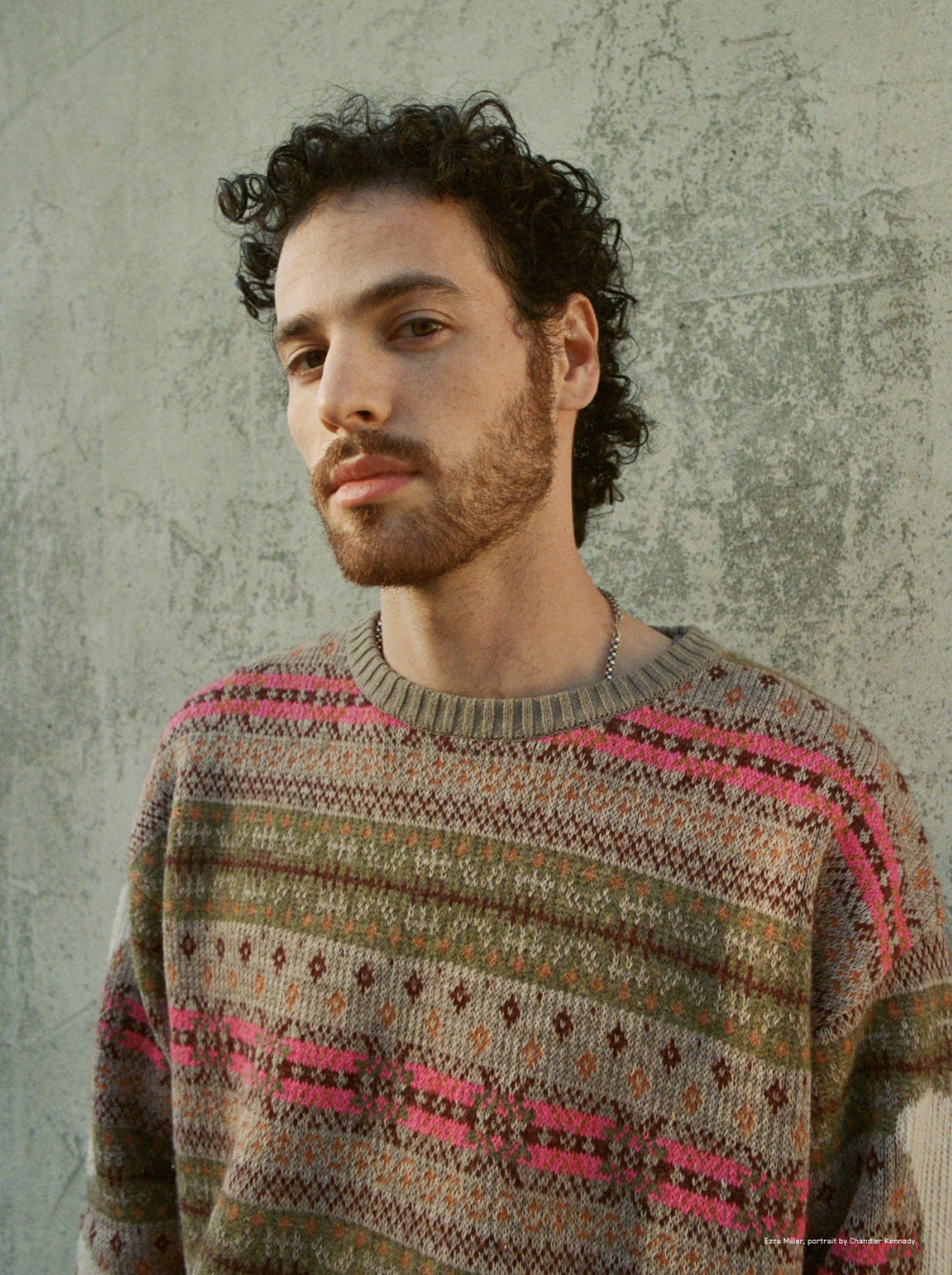This January, Hannah Traore opened her eponymous gallery on the Lower East Side in New York. The group show “Hues” and a special installation curated by Hassan Hajjaj and Miriem Yin, “Mi Casa Su Casa,” inaugurated the space. Working in the city’s art world and independently curating projects, Traore found herself inspired by her friendships and relationships with artists and creatives, and ideas of her own on how to showcase them.
So she set out to found a gallery, one that, as she describes it, challenges the idea of “what’s appropriate.” Expect a mix of emerging talents, alongside known names, and artists that have been overlooked for far too long. Traore also has plans for bringing in creative industries from outside the art world, alongside ephemeral programming, aiming to be a gathering space for anyone interested in art—whatever that capacity may be.
WHITEWALL: What is your vision for the gallery?
HANNAH TRAORE: I’m so interested in artists. That is my primary focus. Working for artists, helping artists, helping artists realize their vision. With a gallery, I have the opportunity to help an artist’s career for years.
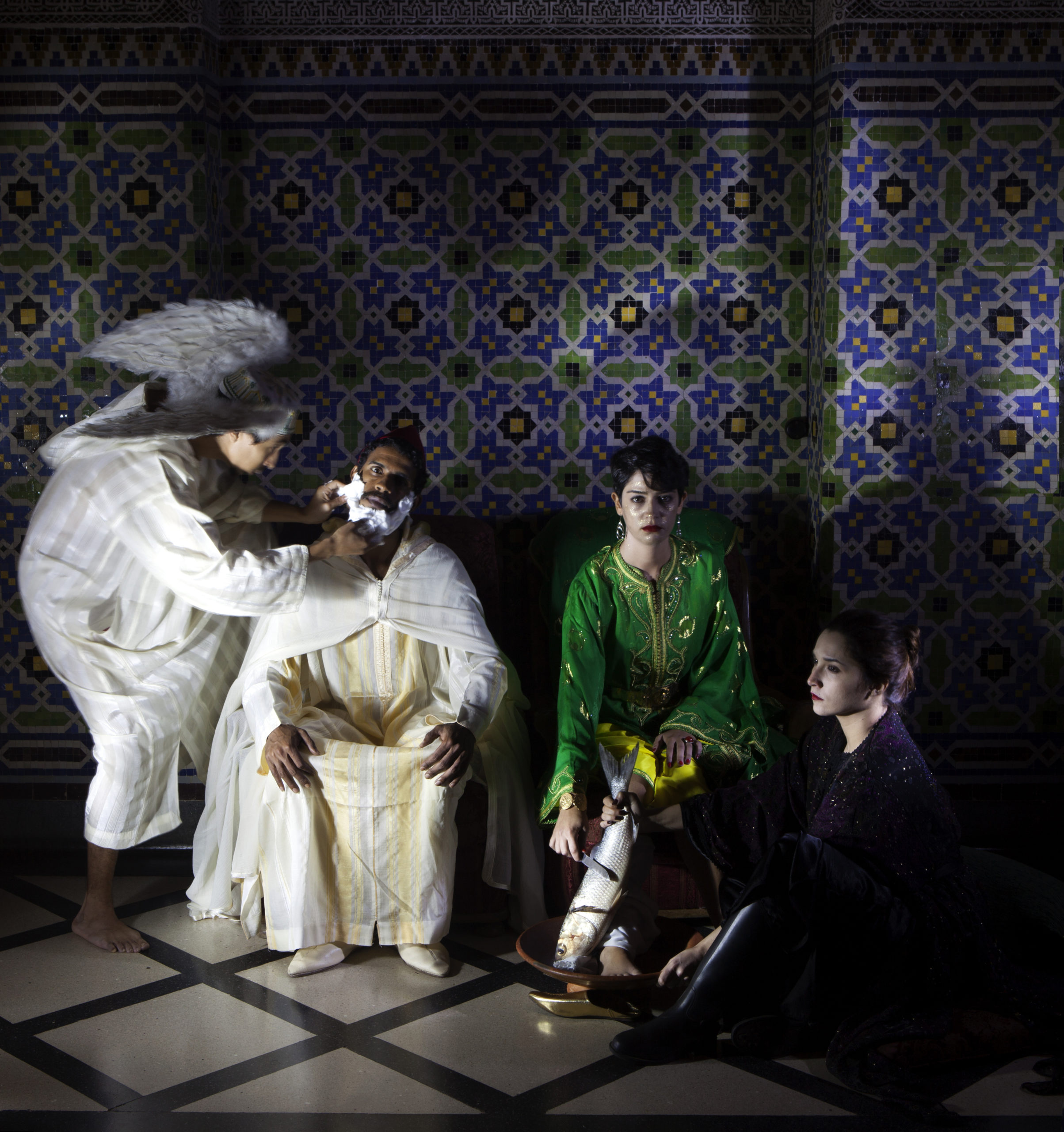 Amine Oulmakki, courtesy of Hannah Traore Gallery.
Amine Oulmakki, courtesy of Hannah Traore Gallery.
WW: How did you go about choosing where in New York you wanted to be?
HT: I only was looking in the Lower East Side and the reason was there are a ton of galleries that my gallery could be in conversation with. I don’t want my gallery to be a place where people have to go only for me. I also wanted foot traffic, because I want to be a gallery that’s there for as many people interested in the arts—in any kind of way—as possible.
In terms of the space, it was important for me to have enough space to host people for events because I’m really interested in programming. I want the space as welcoming and warm as possible. I’m putting in curves in all the corners, picking a white that isn’t too bright, same with the lighting.
WW: The gallery has two rooms: an installation space and a more typical gallery space. Can you tell us about what kinds of shows and projects you imagine for those?
HT: The installation space is there for artists to play. A gallery space can be confining, and it’s really nice to be able to have a space where some artists might fit better. Every time I’ve ever curated an exhibition, my first thought is, “How can I make this an experience?” When you walk into a show and feel like you’ve been transported into the artist’s mind, then I’m happy with the exhibition.
That’s what I think about when I curate. With the gallery room, that might not necessarily be possible; the installation gives me and the artist room to play if we want to.
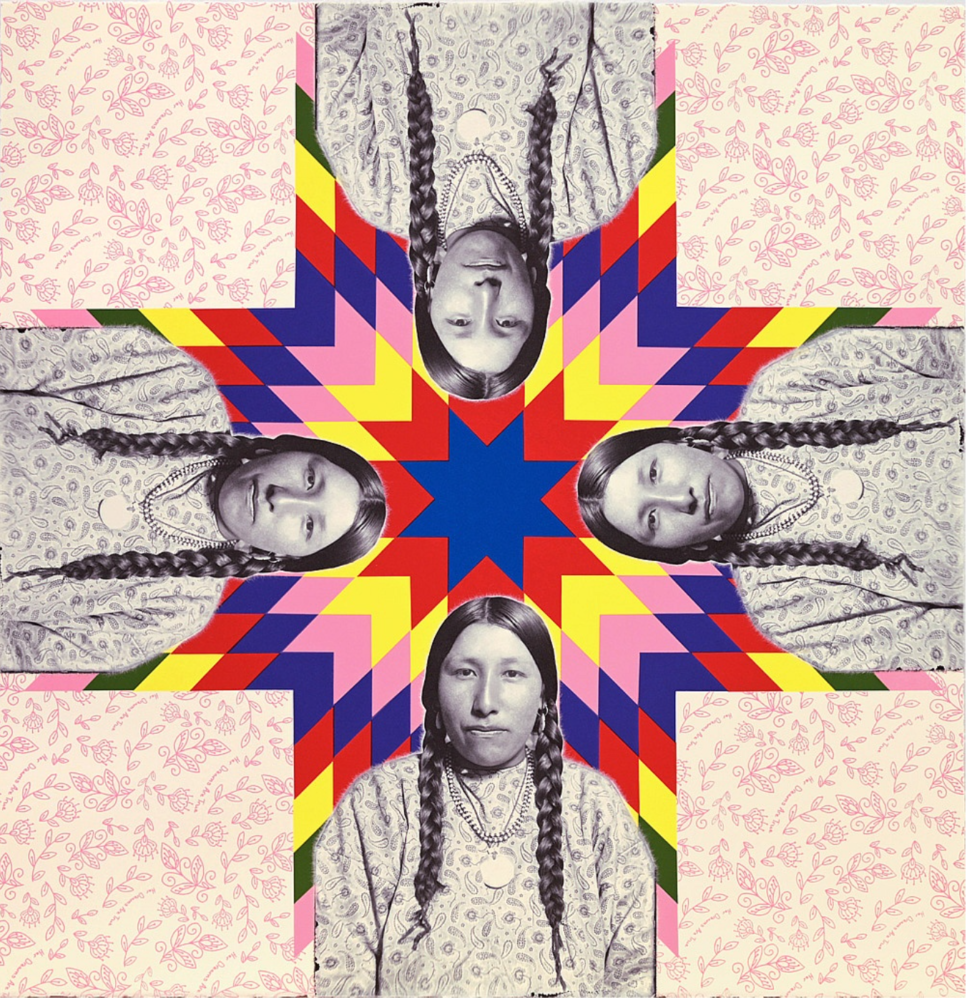 Wendy Red Star, courtesy of Hannah Traore Gallery.
Wendy Red Star, courtesy of Hannah Traore Gallery.
WW: Can you tell us about the inaugural shows, “Hues,” and “Mi Casa Su Casa” curated by Hassan Hajjaj? How do you see these as setting the tone for the gallery?
HT: My first thought was “I want to work with Hassan.” I worked with him four years ago for my senior thesis. So, when I decided to open the gallery, I reached out to him right away, and my idea was for him to bring his Shop for Marrakech. He said yes and he’d also like to bring 14 other Moroccan artists he’s really interested in. It was just so in line with the ethos of the gallery. All the work is so diverse in style, and so it’s really an exciting show.
For “Hues,” as I was doing research, I realized a huge through-line for me is color. As it developed, it took a more conceptual form. The art world puts pressure on artists of color to show their race in their work. Some artists want to show their race—that is incredible and celebrated, but it should also be celebrated when they don’t want to. And it shouldn’t be this expectation placed upon them. That isn’t put on their white counterparts. Highlighting color allows the work to exist in its formality, allows it to breathe, takes those expectations off the artist, and allows them to do what they want to do.
WW: You describe your mission as broadening the perception of what a gallery could be or what is appropriate within a gallery setting. How are you hoping to redefine what’s “appropriate” for a gallery?
HT: Art is in conversation with so many different fields, media, education, design, et cetera. But we don’t see that in a gallery setting. So how can we expand our idea of what art is and what art should be, especially in a gallery? I’m working with a couple of artists who feel like they’ve been stuck in, say, a more fashion world, whereas the other feels she’s been more stuck in the commercial world. I’m fighting against those constraints.
Another way is bringing those other industries into the gallery. I’ll be doing fashion collaborations and pop-ups. On top of that, I think in galleries it’s important to facilitate community and creativity. Because of that, I’m doing other programming that has nothing to do with what’s on the walls but goes along with the ethos of the gallery.
That is why I wanted to open the gallery. I have these ideas, and now I have the space to do them. And I want to be as collaborative as possible—with galleries, with other curators, especially Black women.








